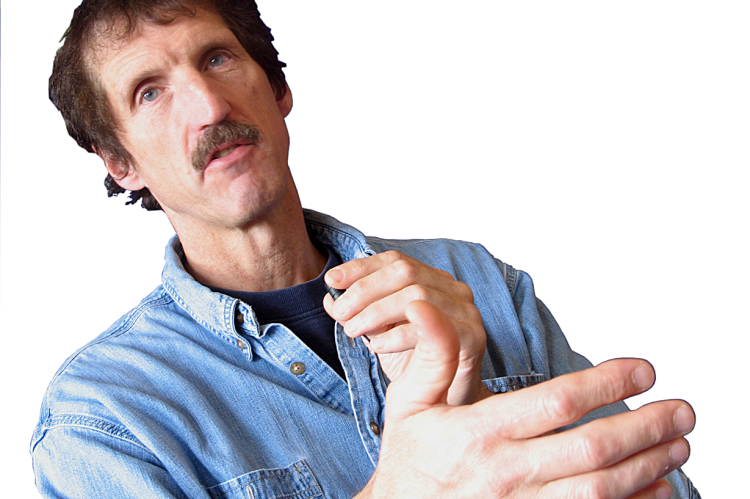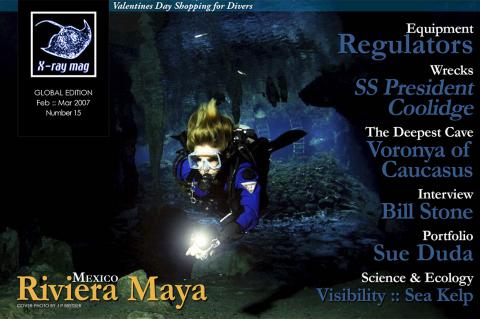Bill Stone
Caves, rebreathers, risk assessment, the meaning of life, acceptable risks, the future of diving and what it takes to be a true explorer—Bill Stone lays it all out on the table for X-RAY MAG publisher Peter Symes, who gets to hear about the dirt and glory of the birth of modern rebreathers through the eyes of the man who helped start it all with his pioneering efforts in closed-circuit systems.
Tags & Taxonomy
X-RAY MAG: You’re a structural engineer by training. Are you driven by innovation, looking for applications or projects for your inventions – or do you find solutions for specific projects?
Bill Stone:It was always the latter. It was the Pena Colorado expedition in 1984 that forced us to develop closed cycles systems because what we wanted to do was either going back to the Pena Colorado system or St. Augustine to continue. The game was that we were trying to beat the French for the world deepest cave. Now we are trying to beat the Russians, but it is still the very same game, and that is about the need to be able to traverse very long distances.
We were developing gear for ourselves to use to explore, and it was these two underwater tunnels that were driving the technology, and that was what very few people realize. They think we went to Wakulla (Springs and caves in Florida —Ed) because we wanted to explore Wakulla, but that’s not true. We went there because I needed a place to test the Mk1, so I went to the state of Florida, and I said I’d like to come down here and test this diving equipment because Wakulla is legendary.
In the diving world, it is a pretty amazing place, so it is has got this 100-meter diameter crystal clear basin with upwards of 70 meters immediately of depth you can work in. It is an ideal place to test rebreathers, and that is why I wanted to go there.
So, I submitted this proposal to the state of Florida, and ultimately, they came back to me. But in order to make the whole project go, we had to change a few things. Now, the other top cavers in Florida—who at that time included Wes Sklies, Sheck Exley, Paul Heinert and a lot of other people—had put in a written proposal which, as a secondary objective, stated the continued mapping of the spring, because at that time, it had been closed for almost 20 years due to private ownership. So, they let us put that into the proposal as an objective because diving equipment had changed quite a bit in the past 20 years. The State of Florida came back to us and said, “All this is very interesting, but we are interested in the spring”. So, they asked us to change the priorities and make the exploration of Wakulla Springs the first priority. We said, “Ok, that is fine.”
We still got the permission to test the rebreather. So, as a result of that change of priority, we were immediately confronted with the problem that everyone knew the place was going to be deep, pushing 90-95 meters.
And so, we started thinking, as early as January 1986 or so, that we needed to do something about decompression.
Ultimately the design came out of this variable depth decompression habitat, this ice cone shape thing with 12,000 kgs of lead at the bottom of it. And we ended up getting Rolex to fund that—the open circuits plus the vehicles which sleds and everything is what became the Wakulla project.
It was kind of a sideshow that we did all this rebreather testing, culminating with this 24-hour underwater test we did on December 3rd and 4th, 1987. I did that in a Poseidon Unisuit, ending up reading two books underwater and also ended up filling the drysuit up full of pee.
So, by the next afternoon, I was pretty darn cold. In order to stay warm, I had to come up with something. OK, Wakulla springs has got this 30-degree sand slope that goes down towards the entrance. So, I had all these guys bring in a lot of lead, and I would take my fins off and walk down the slope with my Mk1 on my back. I would then run back up to get warm; I just kept going up and down that hill. I did that all afternoon on December 4th to stay warm until I could get out.
When we got to the shore, there were about 12 journalists from various press, and we cracked this bottle of champagne. But the interesting thing about that was that we only used half of the supplies—half the life support that was in the rig.
X-RAY MAG: How did you get it all in there?
Bill Stone: Oh, we didn’t get in the cave at all. It was really about testing the equipment. Did the electronics work? Does the breathing system work? What problems are there with breathing? There are a thousand little questions about how you use a rebreather that we learned for the first time in 1987—y’know, what works, what doesn’t, what swimming attitudes were best…
We had streams of data from that dive and a dozen other dives, which enabled us to move on to more generations of the rebreathers all the way up to Mk5.
Exploring Huautla with Mk4s
But it was the Mk4 was the one that was specifically developed to go back to Huautla plateau to continue on the work we left off with in 1984. So, it took us ten years to get to the point where we were able to go back—as we did in 1994.
We used the MK4 to crack that tunnel that was 600 meters long, and we explored another 3kms on the other side before we hit another underwater tunnel at a distance of about 7kms from the
Download the full article ⬇︎

Originally published
X-Ray Mag #15
Cave Diving theme issue. YUCATÀN - Mexico's "Riviera Maya" :: Varonya Cave in Caucasus :: How Caves are created :: Interview with pioneer Bill Stone :: Equipment and training. Shopping for Valentine's Day - New Equipment: REGULATORS: How to chose - How do the Work - Freezing & FreeFlowing - Understanding the Breathing Diagram. SCIENCE: Visibility Tech: The Lady and the president. Profile: Sue Dudas



